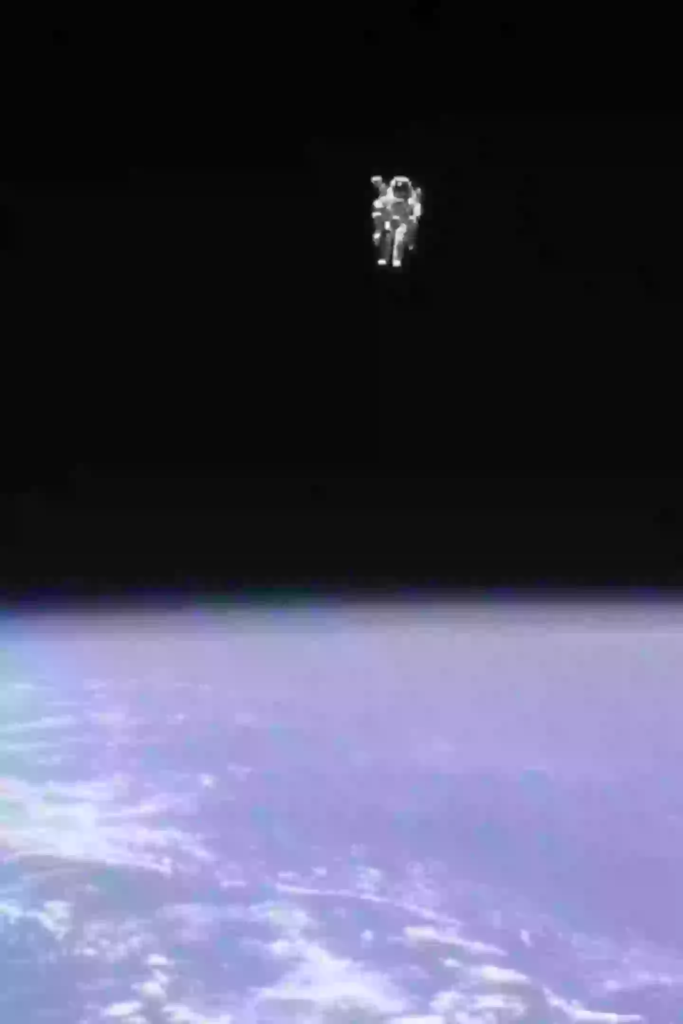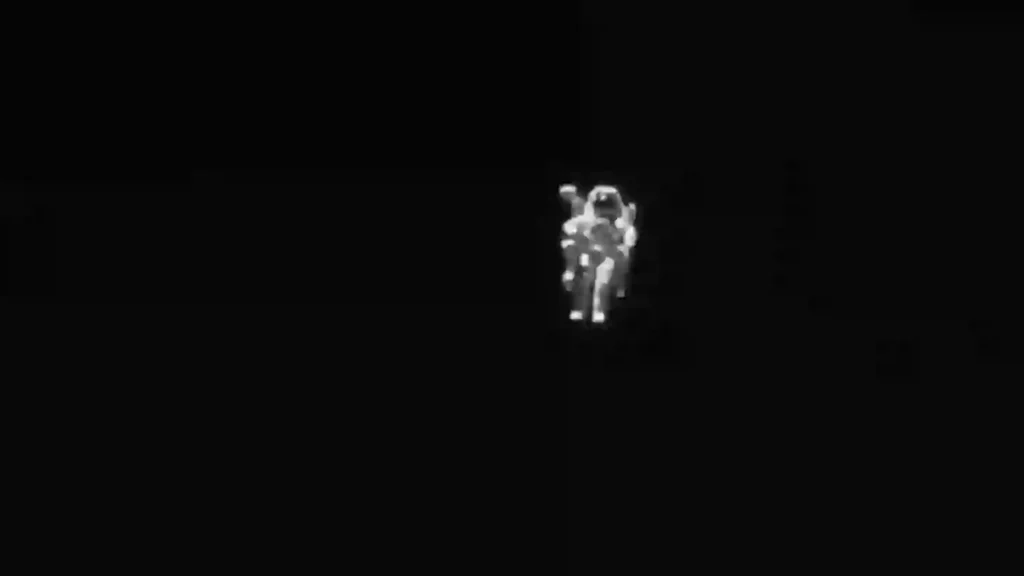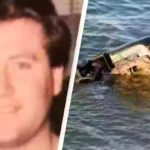The iconic imagery from the Challenger shuttle features McCandless drifting above Earth—a sight that is unsettling, even for those without a fear of heights.

NASA said the picture was the ‘most terrifying space photo’ (NASA)
More than thirty years after he became the first person to achieve an untethered free flight, McCandless told The Guardian there were some tensions at NASA regarding the mission.
“My wife was in mission control, and there was a lot of nervousness,” he noted.
He added it didn’t feel as terrifying as it appeared, sharing, “I wanted to echo something similar to Neil [Armstrong] when he touched down on the Moon, so I said, ‘It may have been a small step for Neil, but it’s an enormous leap for me.’ That eased the atmosphere a bit.”
McCandless mentioned that while he had been informed about the quietness of space, his serenity was occasionally disrupted.

The astronaut was walking for almost seven hours (NASA/MMU)
He humorously shared how numerous personnel were firing questions over the radio, making it far from tranquil.
“My excursion lasted six hours and 45 minutes, and I remained close to the shuttle the entire time, moving 100 yards one direction and then back.
“I was traveling at over 18,000 miles per hour, but was unaware due to the shuttle matching my speed.
“It was only when I observed the Earth that I realized how fast we were moving.”
At one moment, he soared over the Florida peninsula and described it as ‘comforting’ to spot something familiar below.
“It was a fantastic sensation—a blend of personal joy and professional achievement: it had taken years to reach that milestone.”
Having accumulated over 312 hours in space, he retired from NASA in 1990 and subsequently joined Lockheed Martin Space Systems.
At 80, McCandless passed away in 2017 and was laid to rest at the U.S. Naval Academy Cemetery in Annapolis.
Featured Image Credit: NASA


